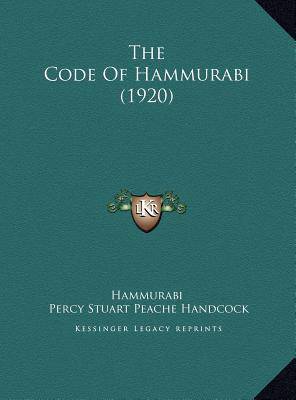
- Afhalen na 1 uur in een winkel met voorraad
- Gratis thuislevering in België vanaf € 30
- Ruim aanbod met 7 miljoen producten
- Afhalen na 1 uur in een winkel met voorraad
- Gratis thuislevering in België vanaf € 30
- Ruim aanbod met 7 miljoen producten
Zoeken
€ 46,45
+ 92 punten
Omschrijving
The Code of Hammurabi is an ancient Babylonian legal text that dates back to the 18th century BCE. This book, originally written in cuneiform script on a stele of black diorite, contains 282 laws that were intended to govern the society of ancient Babylon. The laws cover a wide range of topics, including property rights, marriage and divorce, contracts, and criminal justice. The Code of Hammurabi is considered one of the earliest examples of written law in human history and provides valuable insights into the social and legal norms of ancient Babylonian society. The book is divided into three parts: the prologue, the laws themselves, and the epilogue. The prologue describes the divine origins of the laws and the role of Hammurabi, the Babylonian king, in their creation. The laws themselves are organized into sections that cover various aspects of daily life, such as family law, property law, and commercial law. Each law is accompanied by a specific punishment, which ranges from fines to physical mutilation and even death. The epilogue of the book is a prayer to the gods of Babylon, asking for their blessing and protection for those who follow the laws of the land. This edition of The Code of Hammurabi was translated into English by L.W. King in 1920 and includes a detailed introduction and commentary on the text. It remains an important resource for scholars of ancient history, law, and anthropology.This scarce antiquarian book is a facsimile reprint of the old original and may contain some imperfections such as library marks and notations. Because we believe this work is culturally important, we have made it available as part of our commitment for protecting, preserving, and promoting the world's literature in affordable, high quality, modern editions, that are true to their original work.
Specificaties
Betrokkenen
- Auteur(s):
- Uitgeverij:
Inhoud
- Aantal bladzijden:
- 48
- Taal:
- Engels
Eigenschappen
- Productcode (EAN):
- 9781169639768
- Verschijningsdatum:
- 10/09/2010
- Uitvoering:
- Hardcover
- Formaat:
- Genaaid
- Afmetingen:
- 216 mm x 279 mm
- Gewicht:
- 412 g

Alleen bij Standaard Boekhandel
+ 92 punten op je klantenkaart van Standaard Boekhandel
Beoordelingen
We publiceren alleen reviews die voldoen aan de voorwaarden voor reviews. Bekijk onze voorwaarden voor reviews.











